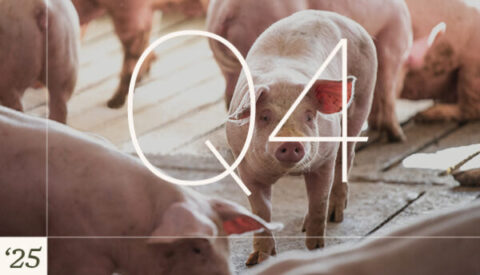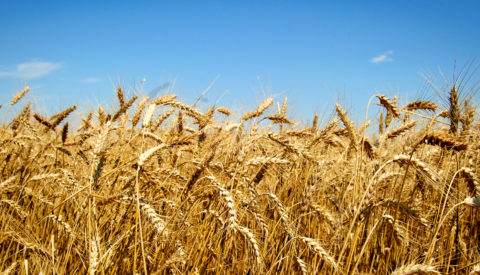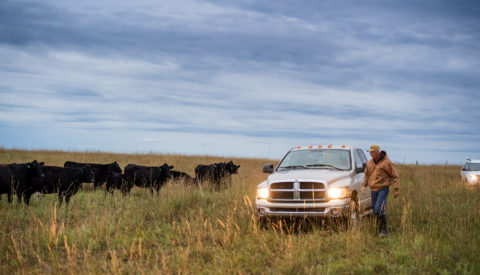Milk supply has returned to growth mode and markets are buckling under its weight. The ability of the market to deal with surplus milk, particularly the fat component of that milk, will be a driving theme through the remainder of this year and into 2026. Dairy farmers are facing two major incentive shifts. First, more than ever before, beef revenues over milk revenues are driving operational decisions on dairy farms. Second, after years of farmers being incentivized to increase the fat component in milk, the processing sector appears poised to begin penalizing for overproduction of milk fat through tiered pricing plans, with lower prices paid for fat above certain levels. $1,500 Day-Old Cross Calves Day-old dairy-beef cross calf prices are reaching the neighborhood of $1,500 (compared with a pre-2023 norm closer to $200), and the beef-cross calves don’t require dairies to take on any of the longer-term risk of feeding and uncertain markets that go along with raising a dairy replacement. Cull cow prices are reaching new highs as well. But rather than choosing to cull at normal rates, many producers are opting to hold cows for additional lactations given the high beef-calf revenues on the front end, and relative certainty that the high cull prices can be maintained until the end of the additional lactation. Not only is milk output climbing, but growth in the fat and protein components within that milk continues to climb as well. Higher Milk Output and Component Growth At this point, the net impact pushes dairy farmers to hold on to cows longer and breed as many to beef as possible. The side effect of holding on to cows longer is that the size of the U.S. milk herd is climbing to levels not seen since the mid-1990s. And more cows mean more milk. Milk production growth was above 3% for three consecutive months from June to August, according to the USDA. Not only is milk output climbing, but growth in the fat and protein components within that milk continues to climb as well. The natural seasonal patterns of components means that component levels will only continue to climb as we head into the colder months. Heading into the fall, the butter market collapsed to levels below $2/lb., not seen since 2021. Cream has been plentiful thanks to the multiyear price signals pushing for higher fat content in farm milk. Now, lower cream multiple prices reflect the heavy supply. Ice cream season, school break and strong exports combined during the summer to help alleviate some of the burdensome cream. However, heading into the fall, the butter market collapsed to levels below $2/lb., not seen since 2021. Lower butter prices drive lower milk fat values on milk checks. Through August, fat values in Federal Milk Marketing Order areas are tracking 17% below last year, with little indication of improvement on the way. The lower market value, however, may not be enough to dissuade fat production, which has been climbing largely due to genetic improvements and breeding decisions more than feed ration alterations. Milk supply among global competitors is also on the rise, further pressuring U.S. prices and competitiveness. Genetic improvement is hard to undo, and slowing fat output will be a challenge. Meanwhile, processors are receiving more fat relative to protein than what they need for manufacturing, and we could begin to see tiered pricing or other disincentives to fat production. Commodity Update and This Quarter’s Forecast Alongside butter, cheese and nonfat dry milk markets have also taken a hit recently, feeling downward pressure from higher milk supply that can’t be overcome completely by strong exports. Milk supply among global competitors is also on the rise, further pressuring U.S. prices and competitiveness. Whey has been the notable exception, still enjoying relative strength thanks to high demand for protein. While my forecasts in the previous Quarterly Outlook were well below futures market projections at the time, I have revised them lower this quarter given the dramatic fall across most dairy commodities. I expect Class III milk to average $17.30/cwt in the fourth quarter and Class IV milk to average $16/cwt. For the first half of 2026, I forecast Class III to average $16.85/cwt and Class IV to average $15.75/cwt. I expect component values to flip, with butterfat values falling below protein values beginning in September 2025 and remaining that way through most of next year at least.
More Articles
See All InsightsU.S. Hog Market Outlook: Q4 2025 U.S. pork production is expected to decline in 2025, followed by a modest rebound in 2026. The USDA recently lowered
Agri-food invests in resiliency as it benefits from the snapback recovery The long-awaited period of pent-up, exuberant demand is here. And for all the benefits to…
Since he was a kid growing up on a farm in central Kansas, David Peterson knew he would spend his life on a farm. “It’s all…



